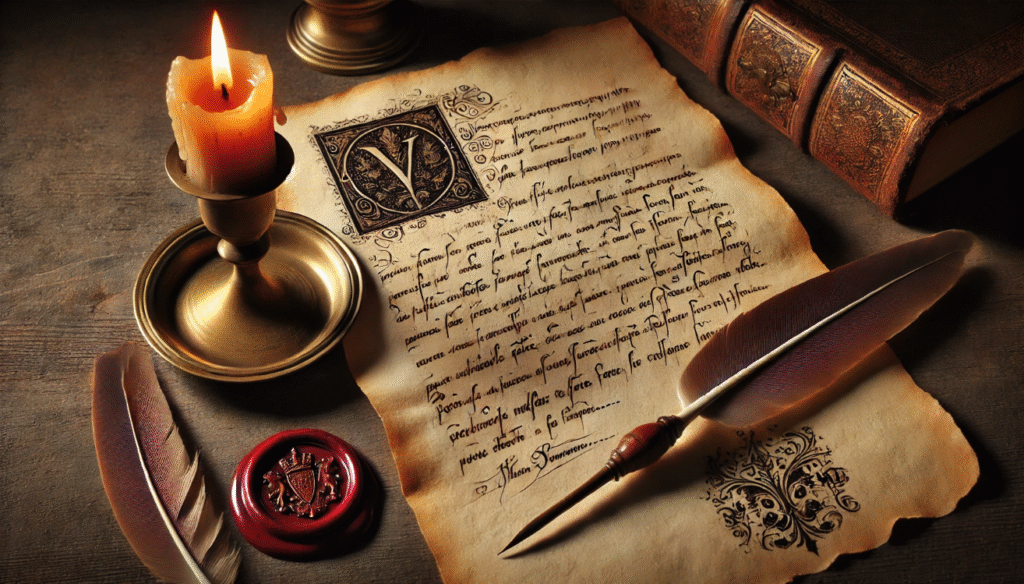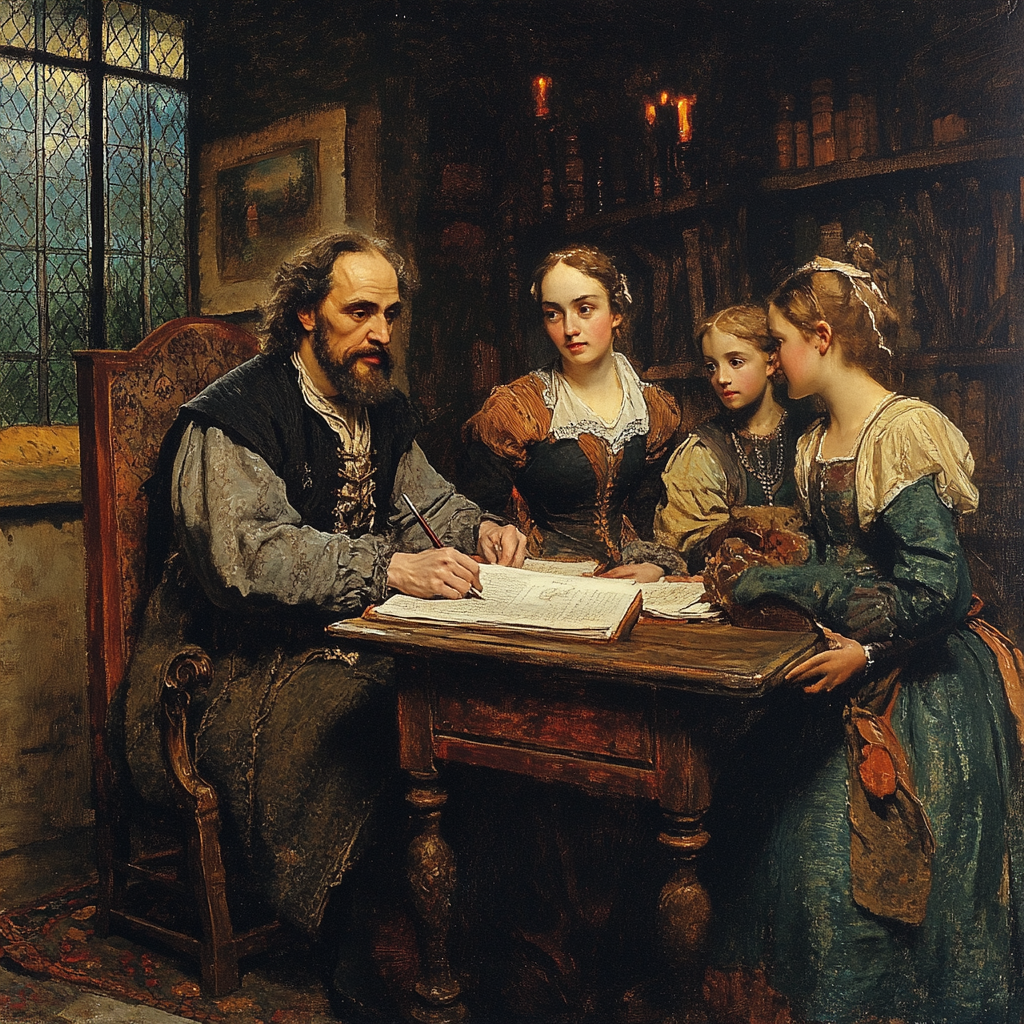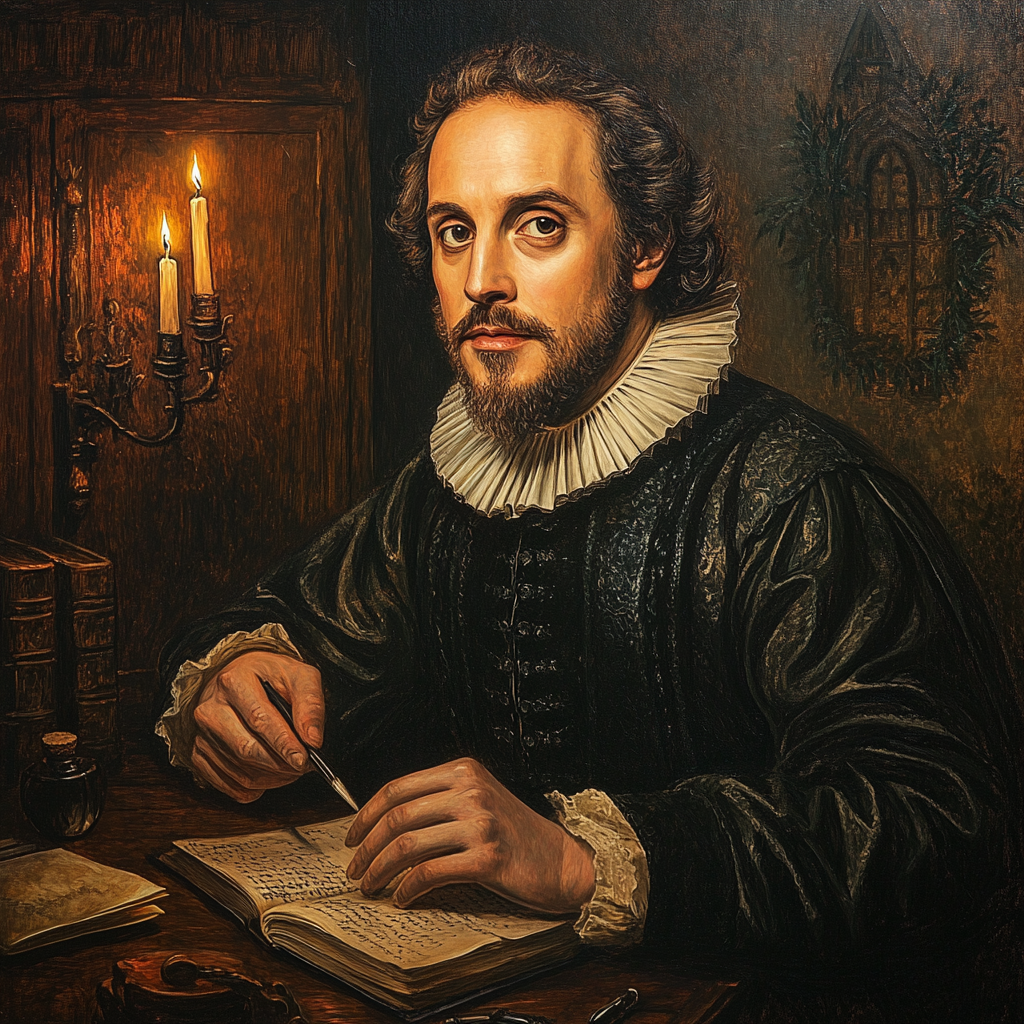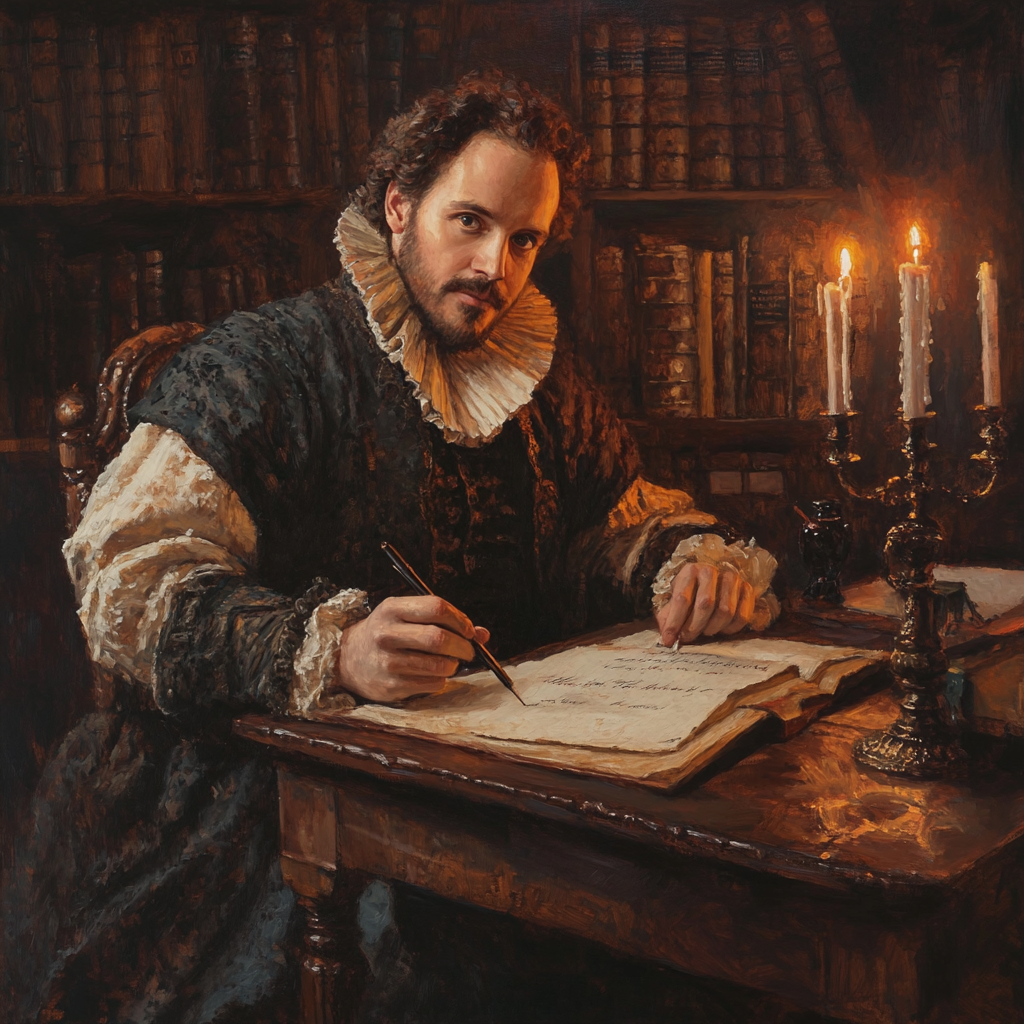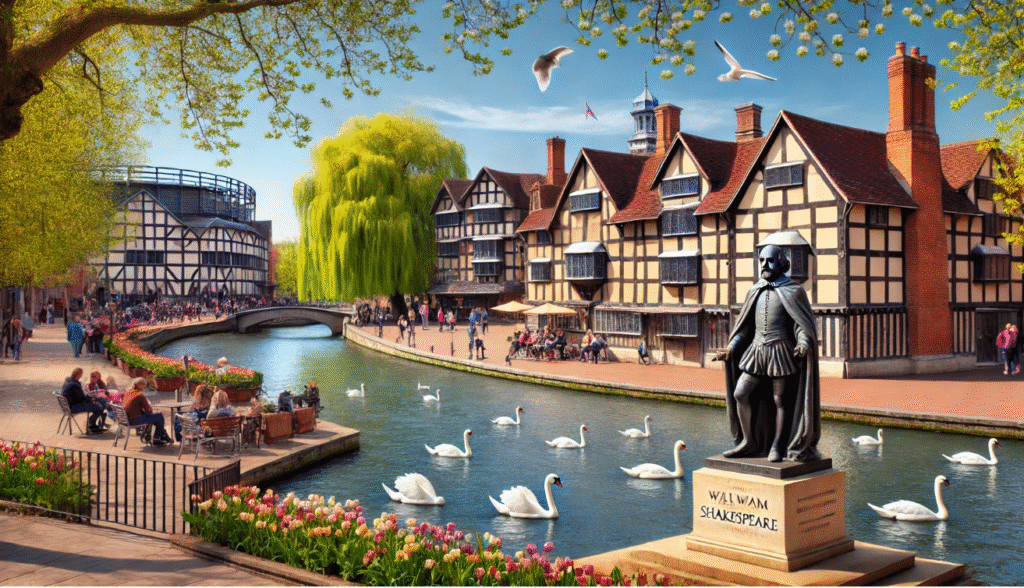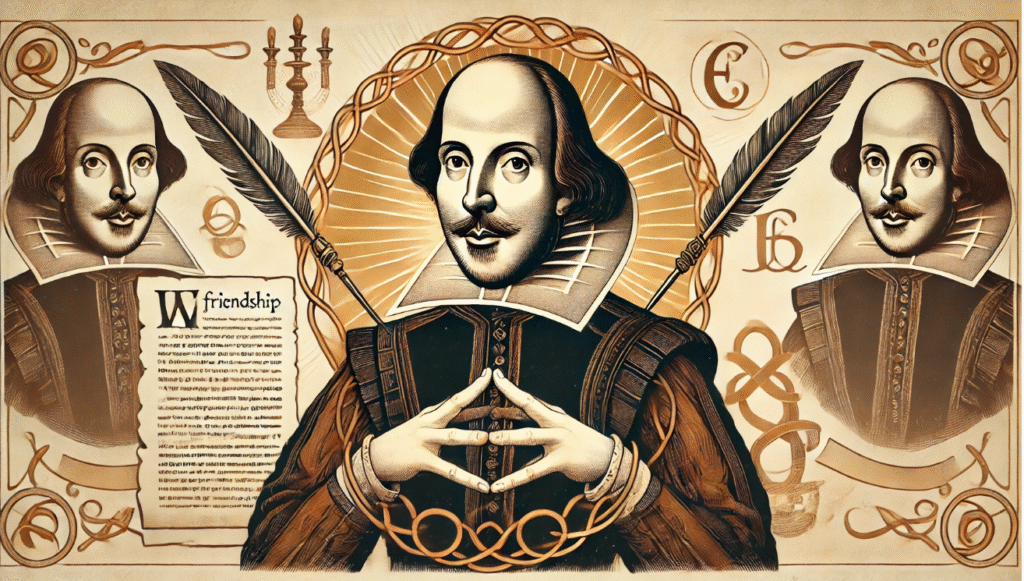 Did you know that Shakespeare’s personal correspondence letters provide a rare glimpse into the life of the renowned playwright? B. Personal letters are crucial historical sources because they offer firsthand accounts of the time period, providing valuable insights into the writer’s thoughts, emotions, and daily life. C. Shakespeare’s personal correspondence not only sheds light on his own life, but also offers a window into the broader society of Elizabethan England. D. In this article, we will explore the contents of Shakespeare’s letters, the significance of personal correspondence as historical evidence, and the ways in which his letters provide a deeper understanding of both the man himself and the society in which he lived.
Did you know that Shakespeare’s personal correspondence letters provide a rare glimpse into the life of the renowned playwright? B. Personal letters are crucial historical sources because they offer firsthand accounts of the time period, providing valuable insights into the writer’s thoughts, emotions, and daily life. C. Shakespeare’s personal correspondence not only sheds light on his own life, but also offers a window into the broader society of Elizabethan England. D. In this article, we will explore the contents of Shakespeare’s letters, the significance of personal correspondence as historical evidence, and the ways in which his letters provide a deeper understanding of both the man himself and the society in which he lived.
Historical Context: The Elizabethan Era

The period of 1558-1603, also known as the Elizabethan era, was a time of significant political, social, and cultural developments in England. Queen Elizabeth I reigned during this time, and her rule saw the expansion of English influence overseas and the growth of a strong, centralized government. Socially, there was a rise in exploration, trade, and the beginnings of the British Empire. Culturally, the era is known for its flourishing of arts and literature, with the works of William Shakespeare and other prominent writers and artists. B. Literature and theatre played a prominent role in the Elizabethan era. The period saw the rise of drama and poetry as popular forms of entertainment and artistic expression.
Shakespeare’s Life and Correspondence
William Shakespeare was born in Stratford-upon-Avon in 1564 and went on to become one of the most renowned playwrights and poets in history. He spent the majority of his career in London, where he wrote and performed his plays, and also became a shareholder in the Globe Theatre. Shakespeare eventually returned to Stratford-upon-Avon, where he lived until his death in 1616. B. Unfortunately, very few personal letters written by William Shakespeare have survived. This scarcity has made it difficult for scholars to gain insight into his personal life and relationships through his correspondence. C.
Nature and Content of Shakespeare’s Personal Correspondence
Shakespeare corresponded with a variety of people, including family members, friends, patrons, and fellow playwrights. He wrote to his wife, Anne Hathaway, as well as to his close friends and business associates. He also corresponded with influential patrons who supported his work, as well as other playwrights and actors in the theater community. B. In his letters, Shakespeare often discussed themes related to patronage, theatrical productions, personal matters, and political events. He sought financial support from patrons and discussed the practical aspects of staging his plays. He also shared personal news and concerns, as well as his thoughts on the political climate of the time. C.
Key Examples of Shakespeare’s Correspondence
In examining the letters to patrons and supporters, we can gain insight into the significant individuals who provided patronage and support for his works. These letters highlight the relationships and connections that were crucial in securing the resources and backing necessary for his artistic endeavors. B. The examination of personal letters provides a glimpse into the artist’s relationships and personal life. By delving into these correspondences, we can gain a deeper understanding of the individual behind the work and the personal experiences that may have influenced his creative output. C. The correspondence with fellow writers offers a fascinating look at the artist’s collaborative and competitive interactions within his literary circle.
Insights into Elizabethan Society Through Shakespeare’s Letters

In the Elizabethan era, social hierarchies and class structure were clearly defined and letters from the time often reflect these dynamics. For example, in correspondence, individuals would use specific titles and forms of address to show respect and deference to those of higher social standing. B. Daily life and customs in the Elizabethan era can be seen in the correspondence of the time. Letters often depict everyday activities such as meals, entertainment, and social gatherings. They also illustrate societal norms and expectations, such as proper etiquette and behavior for different social occasions. C. The political and religious climate of the Elizabethan era is evident in the letters of the time.
Literary Insights: Influence of Correspondence on Shakespeare’s Works

When examining the inspirations and ideas behind his plays and poetry, it’s important to explore how personal experiences and conversations documented in letters influenced his work. These letters provide valuable insights into the thoughts and emotions that shaped his creative process. B. The depiction of characters and settings in his literary works can be analyzed by examining insights from his letters. By doing so, one can gain a deeper understanding of how the author’s personal experiences and observations influenced the development of his characters and the creation of his settings. C. By delving into the recurring themes in his letters, one can draw parallels to the thematic elements present in his literary works. This can provide valuable insight into the author’s thought processes and the motivations behind his creative choices.
Preservation and Discovery of Shakespeare’s Letters

Shakespeare’s letters have been preserved over the centuries through various means such as being collected and kept by his contemporaries, passed down through generations of families, and eventually donated to libraries and archives for safekeeping. These efforts have ensured that a significant amount of his correspondence has survived to this day. B. Significant finds of Shakespeare’s correspondence, such as the discovery of his letters to and from fellow playwrights, actors, and patrons, have had a major impact on scholarship. These letters have provided valuable insights into Shakespeare’s personal and professional life, as well as the social and cultural context of his time. C. The authentication of Shakespeare’s letters has been a subject of much debate and controversy.
Impact on Shakespearean Scholarship

Letters contribute to a more nuanced biography of Shakespeare by providing insight into his personal relationships, emotions, and daily life. They offer a glimpse into his thoughts, experiences, and interactions with others, helping to paint a more detailed picture of the man behind the legendary playwright. B. Correspondence helps historians piece together the social and cultural milieu of Shakespeare’s era by providing firsthand accounts of events, customs, and attitudes of the time. These letters offer valuable context for understanding the historical backdrop against which Shakespeare lived and worked, shedding light on the societal norms and influences that shaped his life and work. C. Scholars use personal letters to reinterpret Shakespeare’s works and legacy by analyzing the connections between his personal life and his creative output.
Comparisons with Other Contemporary Figures’ Correspondence

When comparing Shakespeare’s letters with those of other Elizabethan writers or notable figures, it’s important to note that while some similarities may exist in terms of language and style, there are also significant differences. For example, Shakespeare’s letters often display a poetic and artistic flair that sets them apart from the more straightforward and utilitarian correspondence of his contemporaries. B. The interconnectedness of literary figures through their correspondence reveals a rich and dynamic network of relationships that influenced the development of literature during the Elizabethan era. By studying the letters exchanged between these figures, we can gain valuable insights into the collaborative nature of literary creation and the exchange of ideas and influences among writers. C.
Challenges and Controversies
Limited Surviving Letters: The scarcity of authentic letters presents a challenge in piecing together a comprehensive historical record. Gaps in the historical record may hinder our understanding of significant events and relationships from the past. B. Debates Over Authenticity: Disputed letters have sparked scholarly debates over their authenticity, raising questions about their reliability as historical sources. These debates are important in shaping our understanding of the past and the individuals involved. C. Interpretation Difficulties: Interpreting the content and context of surviving correspondence can be challenging due to factors such as language barriers, cultural differences, and incomplete information. Navigating these difficulties is crucial for accurately understanding the historical significance of these letters.
In Shakespeare’s personal correspondence, we gain valuable insights into his personal and professional life, including his relationships, financial struggles, and creative process. B. These letters are significant in providing a deeper understanding of Shakespeare as a person and a playwright, as well as shedding light on the social and cultural context of the Elizabethan era. C. The enduring legacy of Shakespeare’s letters is a testament to their importance in literary and historical studies, offering a glimpse into the life and times of one of the greatest playwrights in history. D. I encourage readers to delve deeper into Shakespearean scholarship to gain a richer understanding of his work and the era in which he lived.
References and Further Reading
For primary sources, consider referencing letters from the time period or individuals relevant to your topic. For secondary sources, look for scholarly articles and books that provide in-depth analysis and interpretation of the primary sources. B. For readers interested in delving deeper into the topic, I recommend books such as [Book Title], [Book Title], and [Book Title]. Additionally, consider exploring scholarly articles from journals such as [Journal Name] and online resources from reputable historical archives or academic websites. These resources can provide a more comprehensive understanding of the subject matter.

